#serbian folklore
Text


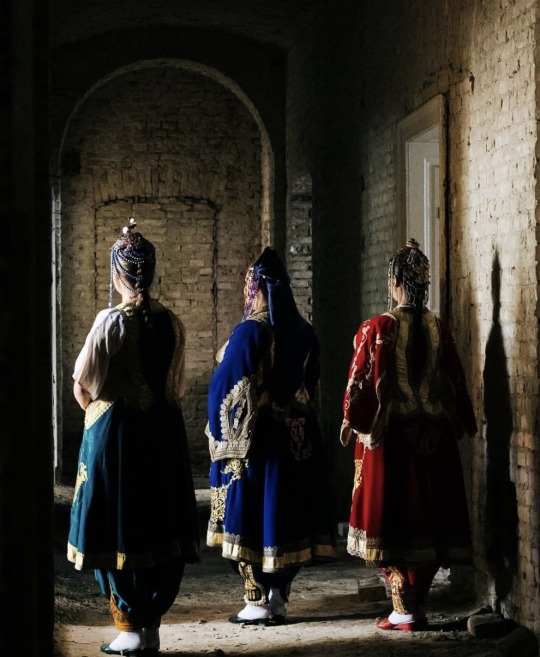

Serbia
KUD Kolovit Gradiska
Photos by: Teodora Cikic
157 notes
·
View notes
Text

slavic frobin commission for @/sogekingprotege on twt!
#digital art#one piece#one piece fanart#digital illustration#anime fanart#artists on tumblr#anime#frobin#nico robin#franky one piece#robin one piece#franky x robin#robin x franky#serbian folklore#slavic folklore#folklore#slavic#slavic art#narodna nošnja
954 notes
·
View notes
Text



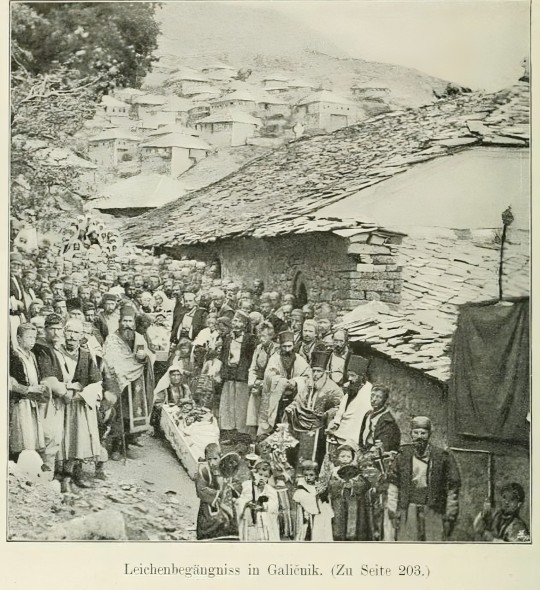






◾Old photographies of Serbs from North Macedonia dressed in serbian traditional clothes from different areas ⏳
▪️Time: 1880s
◾Source: Makedonien und Alt-Serbien by Gopevi, Spiridion.
Publication date: 1889
Publisher: Wien L.W. Seidel
Contributor: Robarts - University of Toronto
Language: German
#serbian#balkan#europe#serbian beauty#serbian traditional clothes#serbian folklor#slavic#serbian women#serbian tradition#beauty#Serbs#Srbi#North Macedonia#Serbs in Macedonia#Srbi u Makedoniji#Nošnja#serbian aesthetics#Serbian culture#Serbian folklore
22 notes
·
View notes
Text
Vampire Pumpkin
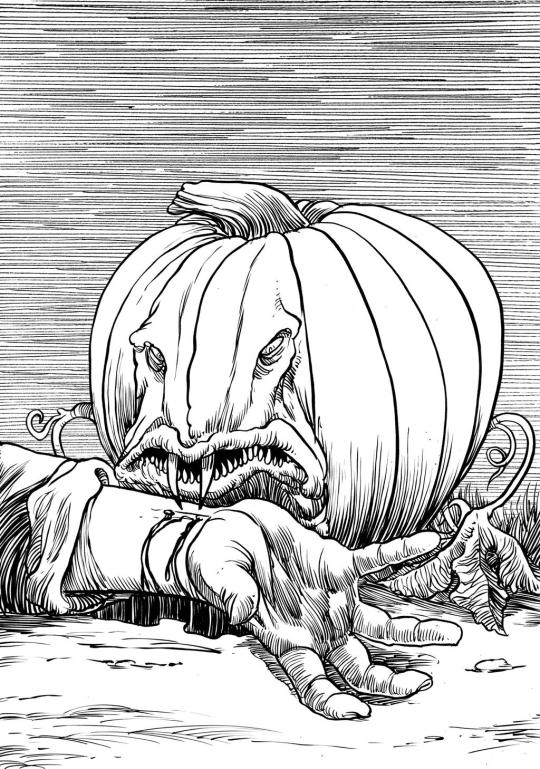
“Inktober Monster Challenge 10: Vampire Pumpkin” © Richard Svennson, accessed at his deviantArt here
[I will no longer be in Europe for the World Tour project in October, but I still figured I should cover this exceedingly spooktacular monster. The only primary source for the vampire pumpkin comes from Tatomir P. Vukanović, who wrote about the folklore of the Romani in Serbia. Part of me wonders if it is a goof, in either direction. Whether Vukanovic made it up as a joke, or whether the Romani he interviewed made it up to mess with the guy asking all the questions.
Regardless, the original vampire pumpkin doesn’t bite people; it just moves around and causes ill-feelings. Which makes it more “vampire” as in monster than actual blood drinking undead. This is one of the few images of the vampire pumpkin out there, and it gives it fangs (which has the advantage of making this something you can fight, rather than a hazard).]
Vampire Pumpkin
CR ½ NE Plant
This creature resembles a large, blotched pumpkin with vines still attached. It has narrow eyes and a small slit for a mouth, in which are surprisingly sharp canine teeth.
In cursed lands, or areas where the undead commonly roam, even the vegetables may turn sinister. Vampire pumpkins can form from any sort of curcubit, including melons, squashes and gourds, but for whatever reason pumpkins are the most common. Vampire pumpkins are barely sapient, being able to understand a few words in a language commonly spoken where they live. They obey intelligent undead creatures, and are slavishly devoted to vampires. A vampire’s castle may have a patch of vampire pumpkins growing outside it, whether the vampire wants it or not.
Vampire pumpkins are skittish and cowardly if not led by the undead, and tend to skulk in shadowy places rather than attack indiscriminately. If cornered, or if a foe is clearly weakened or dying, it will bite, which causes a surprising amount of blood loss for such a little nip. What makes vampire pumpkins especially dangerous is their cursed aura. Whether or not the vampire pumpkin shows itself, creatures near it become more vulnerable to accidents, disease and other misfortunes. Thus, identifying the vampire pumpkin is often more difficult than actually killing the thing—vampire pumpkins are slow, and can be pulped, chopped or boiled with only slightly more difficulty than an ordinary squash.
Despite their sinister behavior, vampire pumpkins are still edible. Dishes made with them have a slightly more iron-rich flavor, but are otherwise harmless.
Vampire Pumpkin CR ½
XP 200
NE Tiny plant
Init +4; Senses low-light vision, Perception +4
Aura malaise (30 ft., DC 12)
Defense
AC 13, touch 12, flat-footed 13 (+2 size, +1 natural)
hp 11 (2d8+2)
Fort +4, Ref +0, Will +0
DR 2/slashing or bludgeoning; Immunities curses, plant traits
Defensive Abilities negative energy affinity
Offense
Speed 15 ft.
Melee bite +3 (1d2 plus bleed)
Space 2 ½ ft.; Reach 0 ft.
Special Attacks bleed (1d2)
Statistics
Str 10, Dex 11, Con 12, Int 3, Wis 10, Cha 13
Base Atk +1; CMB +0; CMD 10 (cannot be tripped)
Feats Improved Initiative
Skills Disguise +1 (+21 as vegetable), Perception +4, Stealth +12; Racial Modifiers +20 Disguise to appear as a mundane vegetable
Languages Common (cannot speak)
Ecology
Environment any land
Organization solitary, pair, basket (3-6) or patch (8-24)
Treasure none
Special Abilities
Aura of Malaise (Su) A living creature within 30 feet of a vampire pumpkin must succeed a DC 12 Will save or suffer a -2 penalty on all saving throws for the next minute. A creature that succeeds its save is immune to the aura of malaise of that vampire pumpkin for the next 24 hours.
49 notes
·
View notes
Text
In Serbian and Balkan folklore in general as far as I know the only people who can cast curses on you are women who menstruated so my question is if a trans man who has had his period wants to cast a curse on someone, would he be able to?
1 note
·
View note
Text
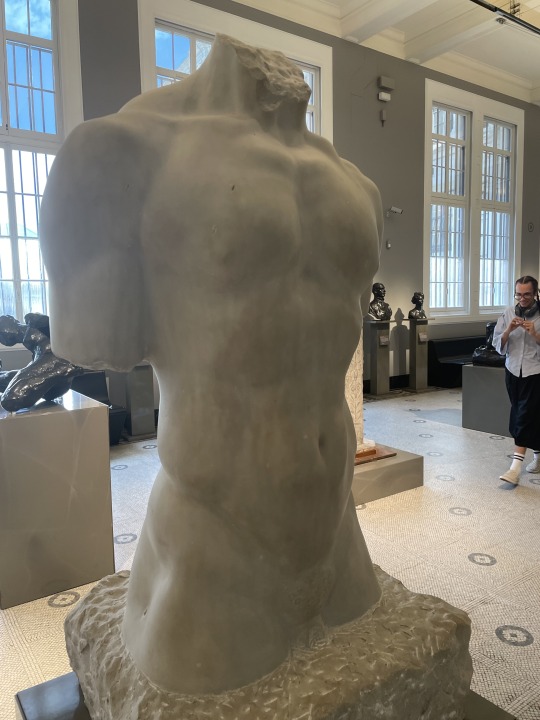
#statue#marble#Torso of Banovic Strahinja#Ivan Mestrovic#Serbian folklore#Virginia and Albert Museum#London#England
1 note
·
View note
Text
Pirot Kilim ornaments

Чурлињак (čurlinjak) - The most basic motif, representing a cross section of the lower part of the whisk for mixing ingredients (called čurlinjak).
Врашко колено (Devil's knee) - The motif comes from the pre-Christian Slavic religion. It symbolises movement in circles (kolo dance) and the flow of life, and provides strength, bravery and defense against evil.
Корњача/жељка (turtle) - The most popular pattern of the Pirot Kilim. It symbolises durability and longevity and brings fertility, healthy life and protection from danger.
Ченђели (čenđeli) - Represents a grappling hook mounted on a wooden pole, used for hanging things.
Бомбе (bombs) - It beard this name due to its semblance to handgranades, but the motif has existed since before handgrandes were invented. It provides strength and energy, especially to men, so the kilims with this motif were usually gifted to boys for their life milestones.

Гуштер (lizard) - This pattern probably originates from modified depictions of dragons. It represents laziness and indifference, but also change, flexibility and adaptation to the world.
Ђулови (roses) - It represents a stylised cross section of a rose, showing both the exterior as well as the pistils, anthers and seeds inside. It is symbolises a young woman and her beauty. Kilims with this motif are often gifted to daughters by their mothers. Different variations of this motif exist, some of which (the roses on shackles) were, according to legends, made as rebellion of kilim weavers against the Ottoman repression.
Ђаволчићи (Little Devils) - The devil is represented as a human figure turned upside down, with the devil's head turned towards the underworld, and a bird on the other side representing the heaven.

Гугутка (dove) - Birds protect from evil spirits and diseases and connect the earth and sky. It represents family harmony, love, peace and joy, and as such kilims with this motif are often gifted to new homeowners. This motif can often be seen arranged around a pole, representing a tree full of birds.
Атапот (atapot) - It represents an octopus, and the name probably came from a distorted pronunciation of the word oktopod (octopus).
Француске бомбоне (French candies) - This motif was probably inspired by silk candy wrapped in decorative paper and brought to Serbia from distant lands. According to a folk story, when the French soldiers liberated Pirot in the First World War in 1918, the kilim weavers designed this pattern as a sign of gratitude.
Столица (chair) - It represents an antique chair and the inspiration for this pattern came from the everyday life of the kilim weavers.
Тиче (tiče) - It represents a small bird.
Source: "Ornaments of Serbia: the Pirot Kilim" by Milica Živadinović. Art by me.
#art#water color art#serbia#serbian#kilim rug#folklore#balkans#balkan#traditional art#water colour art#slavs#slavic#south slavic
368 notes
·
View notes
Text
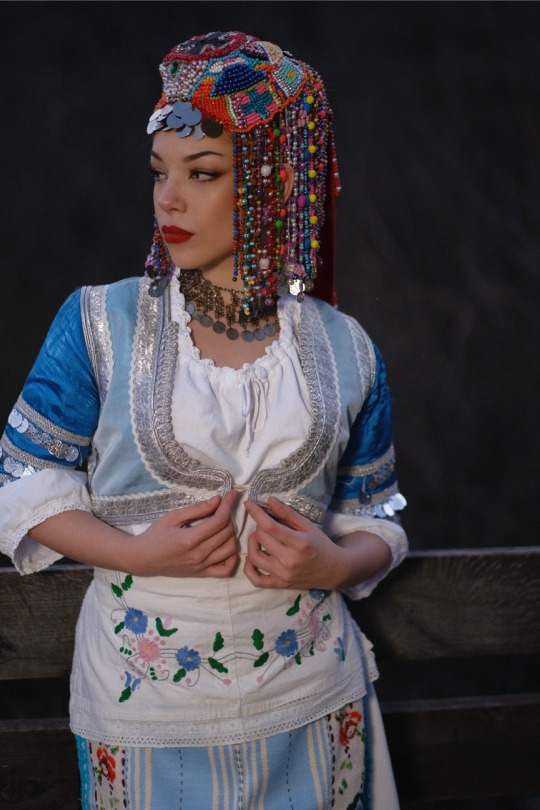
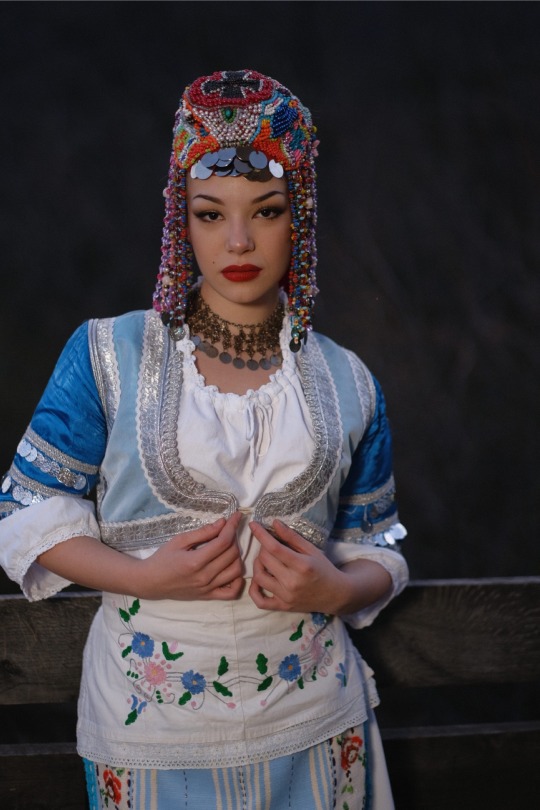
Traditional clothing from Gnjilane, Serbia
Народна ношња из Гњилана
#serbia#srbija#personal#gnjilane#kosovo i metohija#kosovo#traditional clothing#serbian tradition#headwear#photography#aesthetic#girl#makeup#tradition#slavic#balkan#narodna nošnja#folklore#folklor#girls
338 notes
·
View notes
Text
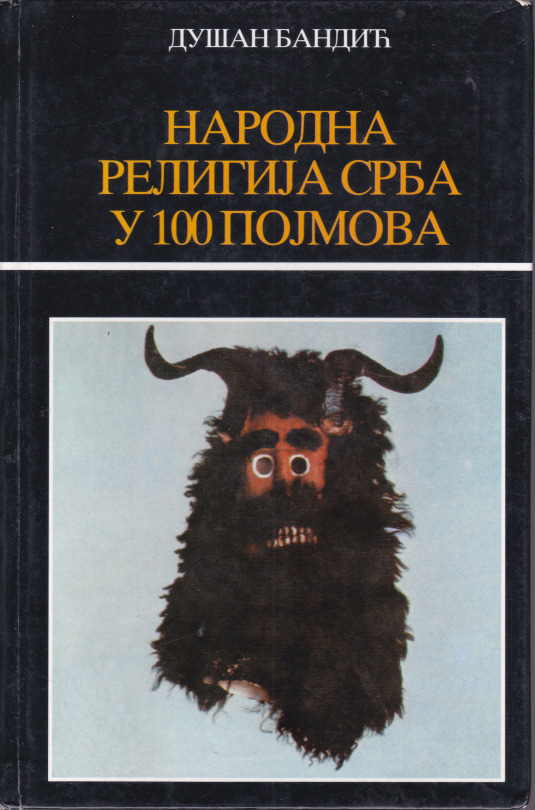
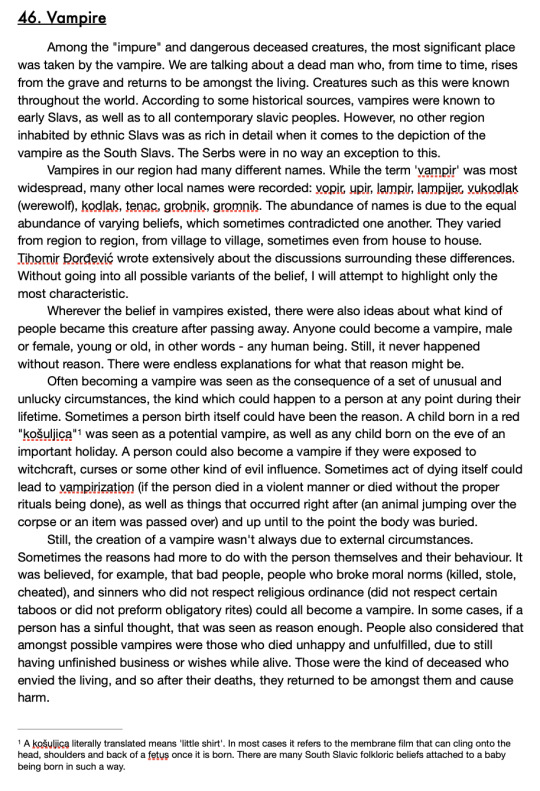
Serbian Folk Religion in 100 Terms // Narodna Religija Srba u 100 Pojmova (1991) - Dušan Bandić
"Dr. Dušan Bandić (1938-2004) was a professor of ethnology at the Faculty of Philosophy in Belgrade and for a time the head of the Department of National Ethnology and Anthropology.''
- in my attempt to make more sources on ex-yu culture accessible, i've begun to scan and share some of the good material i've read! due to some expressed interest, here is a segment on vampires and watermills (which are connected to vampires)!
- for folks who can read serbo-croatian and cyrillic, you can read the direct scans from the book here and for those of you who can't, i've translated the pages into english myself and you can read them here. hope some of you enjoy reading about vampires before they were sexy! if you are interested in reading any of the other segments, you can find a table of contents here and let me know which you'd like to see first.
(note: while im fluent in english and put a lot of effort into these translations, i'm by no means a professional translator. my primary focus was that the facts were translated correctly and relayed what people believed)
#its here finally i did it!!!!#i think i'll start tagging all my archiving and information sharing attempts with#basil archives#really hope somebody enjoys this!#i've read the whole book myself and can confirm that its a lovely source of reliable information#written before the onslaught of nationalism#just a genuine account of some folkloric beliefs#balkan youth have always outlived evil times#myposts#also this books talks about the beliefs of serbs from all over bosnia croatia and motenegro as well#and as we know the beliefs of a village didnt split across ethnic lines before uh modern times#so its not exclusively serbian beliefs#neither of the texts are large btw!#vampires a 5/6 pages watermill like 2 or 3#btw if anyone notices any mistakes please let me know! english or serbian#also if google drive is for whichever reasons not working also let me know!
120 notes
·
View notes
Text

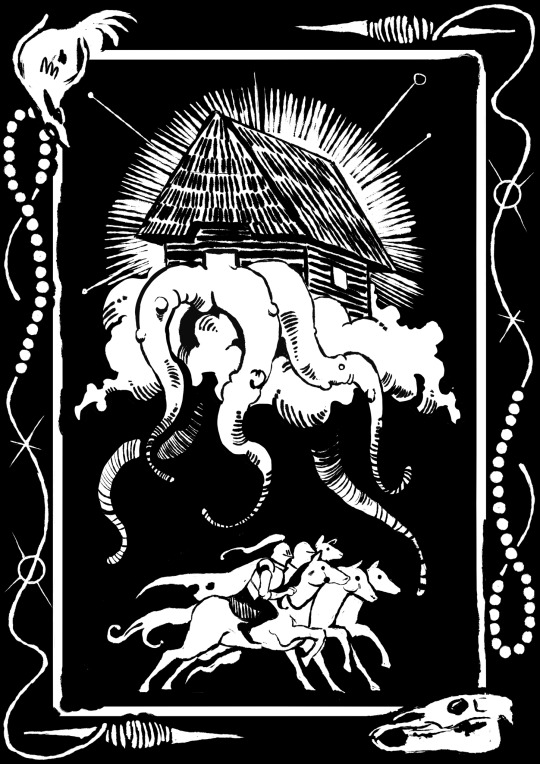
Print and digital sketch, really happy how it turned out!
#linoprint#print#printing#illustration#traditional art#serbian folk tale#balkan folklore#balkan#folk horror#Serbian fairy tale#slavic folklore
40 notes
·
View notes
Text
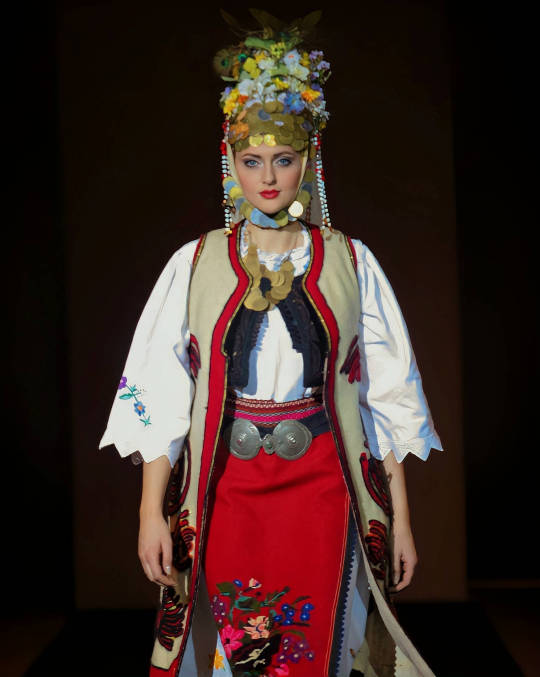
◾Smilyevats(srb. Смиљевац/lat. Smiljevac) is a type of women's cap worn as part of the traditional clothes in Serbia. It belongs to the category of bridal hats. These caps are larger in size, often had tassels down the temples and are especially characterized by the fact that they were all decorated with immortelle and coins. In terms of their size and decorations, they resemble a cap called a tarposh, but with a slightly different shape. This type of cap was worn from the Middle Ages to the beginning of the 19th century.
#serbian#balkan#europe#serbian beauty#serbian traditional clothes#slavic#serbian folklor#serbian women#serbian tradition#beauty#Smiljevac#Serbian culture#serbian folklore
27 notes
·
View notes
Text


Me in Serbian costume
36 notes
·
View notes
Text

Balačko
#balačko#creatures#cryptids#serbian#mythical creatures#mythological creature#slavic folklore#slavic#slavic mythology
10 notes
·
View notes
Text
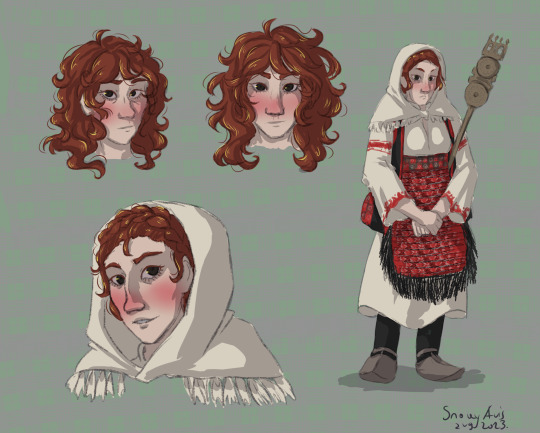
Possible design for an OC
#art#digital art#folk dress#balkan#balkans#south slavic#dalmatian#dalmatia#dalmacija#croatia#folklore#slavs#slavic#oc art#croatian#character design#serbian
51 notes
·
View notes